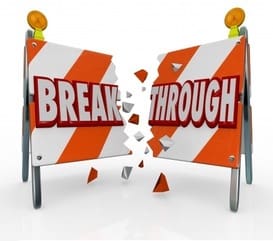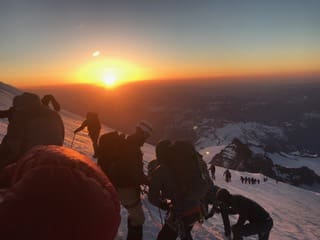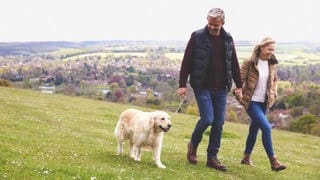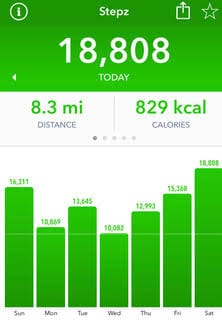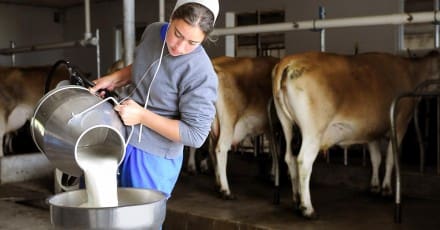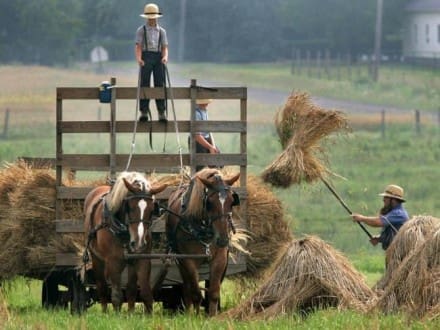A major part of human history has been our never ending search for energy. Now energy comes in many forms besides oil and gas. Which we didn’t even have a need for until we invented the machines that required the inherit energy in oil/gas to function. Before that it was coal, wood, and at the most basic: food. Food, the caloric energy that kept us going. Now in today’s modern world we have many more sources where we can draw energy: solar, wind, hydro, nuclear, etc. However, these are fuel for our machinery, not us. When it comes to own personal energy stores it’s more complicated, as you can’t just throw a switch and have unlimited physical energy. That would be great as we all need lots of energy to live our lives. However, that’s just a fantasy and the fact is that even with all our high tech devices (that were invented to make our lives easier), today’s fast paced world is arguably more energy draining to people than in any other time in human history.
To start with we need to realize that when it comes to individual energy it’s basically a zero sum game. You can only store so much and you can only use so much. Good food, clean water, fresh air, enough sleep and a high level of fitness can optimize your energy levels by tuning your body to operate at a more efficient level. Just like a highly tuned race car does. Those things on are the plus side of the energy equation, things that add to your fuel cell, or at least allow it to drain off at a slower rate. On the other end, there are many more things that only draw from your tank. Work and the general everyday requirements of life all require energy, lots of it in fact. That’s both mental and physical energy as we all know that complicated mental tasks can drain you physically so much, that after a few hours of desk work, you can feel like you just ran a marathon. Plus, as we age we tend to have less energy. Just like that great truck you bought years ago, after many miles and a lot of bumps in the road, it just doesn’t get up and go like it used to, even if well maintained. That’s just physics and the nature of things, as eventually everything (and everybody) wears out. The point of all this is how do we get more energy, more physical drive and mental sharpness to do what we want to do? I bring this question out as when working with people on their fitness, it’s a question that comes up a lot and from all ages, fitness levels and occupations. As I stated earlier good food, fitness, sleep, clean water and fresh air are the basics to help you have more energy. But there are many more things in our lives that just drain our energy. Some are small, but they all add up to leave you tired and worn out.
Keeping your weight down can go a long way: This is simple concept as if you’re carrying extra body fat, it takes more energy to move it around. That’s not just your muscles, but your internal organs have to work harder also. Race cars don’t carry extra weight for a reason, think about your body the same way. What you want is a high powered and efficient engine mounted in the leanest frame possible. Smoking (at all) and drinking too much are two of the worst wasters of energy. Yes when you smoke you get a little energy buzz from the nicotine, but make no mistake smoking long term will drain your energy and in the end kill you, which is the ultimate emptying of your tank. Drinking too much is in the same league, these are true no brainers that seem too obvious to mention. So I’ll just say If you have a problem with these get some help, its out there.
However IMO the true “Black Hole” of energy is stress. The stress of work, family, the 24/7 connected world of politics, social media and internet bullshit will suck the life force out of you. Some stress has benefits as it motivates us to do things we need to do, even when we don’t want to. Stress is at it’s core just pressure and as they say, only pressure makes diamonds, but too much is a sure killer. Another dark side of stress is it will make every physical and mental issue you have, worse. Take it from this old Jarhead living with TBI, I can tell you that when I’m under pressure and stress from work, or what ever, all my TBI symptoms become worse. Stress can also originate it’s own health problems. High blood pressure is one, headaches, depression and eating disorders are just a few more, there are many. But putting all that aside, stress will drain your energy, big time. So what can we do? I’ve found a few simple changes in lifestyle (and thinking) have greatly reduced the stress in my life and it’s effects on my health and energy levels.
Being connected 24/7 is how the world works now and there is no 100% escaping it. However, un-connecting yourself when ever possible can go a long way toward reducing your stress. For example, I have an app on my phone so I can listen to the radio when I PT. I used to always listen to the news, but I finally admitted to myself that it mostly just kept me irritated 24/7. Now I just listen to music. BTW, don’t down play how listening to music you like can help relive stress in it’s own right, it certainly can help. I also have severely limited my news intake from TV and the internet. Remember when we used to get the entire days news in just 1/2 hour every night? Now it never stops. Try limiting it and you see that nothing really has changed, it’s the same crap, over and over. If something really big happens, don’t worry you hear all about from your buddies watching (and commenting) the news on their computers day and night. You won’t miss it and your body and mind will feel better from the reduced exposure.
With that find a hobby(s) that has zero measuring sticks. No way to measure it’s success, failure, or a way to compare it to someone else’s performance. Just something you like to do, something that is a passive recreation. I don’t mean “passive” in the sense like just sitting on your ass watching TV. I mean passive in that it takes very little mental energy. I have a bunch of these things that I try to spend time with. Going out in my kayak, walking my dog, fishing, shooting at the range. You may say that these things do require some physical and mental effort. True, but they are not really hard physically and mentally they aren’t taxing. I’m not doing fishing tournaments, or shooting competitions, I’m just doing something that requires some focus and a little physical effort that is relaxing and stress reliving. Everybody is different, some people like Yoga, many people find stress relief in practicing their faith, or volunteering in their community. Find yours.
It’s also been my experience that the vast majority of stress is self inflicted, self generated in reaction to the outside world. Of which when you really look at most of it, we all have about the square root of zero impact on, no matter how worked up we get. I have seen people make themselves physically sick when talking about politics, the weather and even sports? What I don’t think we realize is while it’s self imposed stress, not like the actual stress experienced by our ancient ancestors when being chased by a cave bear. The fact is your mind and body won’t note any difference between the stress of arguing over silly politics, or fleeing from a cave bear and both will take their toll in the same way. Unless the bear actually catches you, then your stress level is the least of your worries. The bottom line is we only have so much energy and we all need as much as possible to live a successful, happy life. Staying in shape, keeping your weight under control are great, but managing your stress is just as important. Turn it off, let it go. Grab your dog, dial in your favorite music and tune the F out. You won’t miss it as much as you think you will. That I guarantee you.
Be Safe Always, Be Good When You Can.
Semper Fi
MGunz



